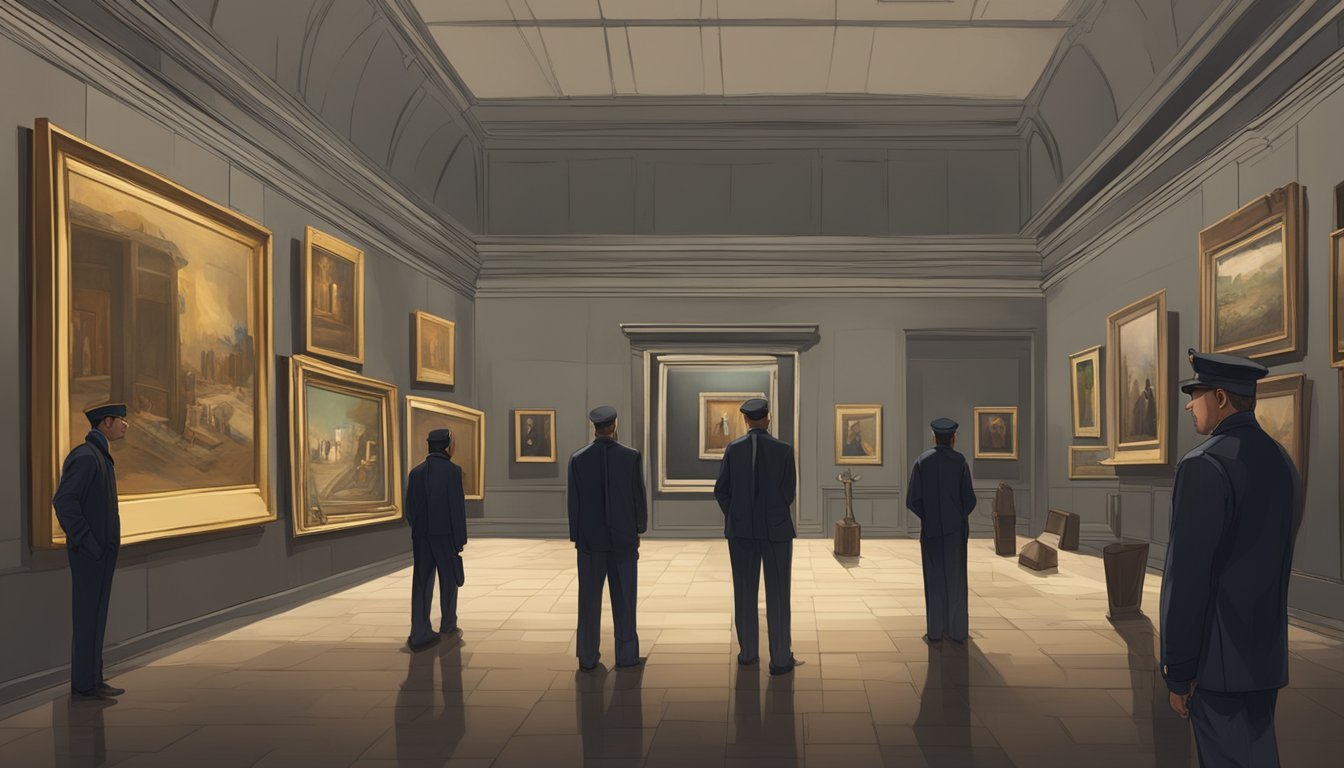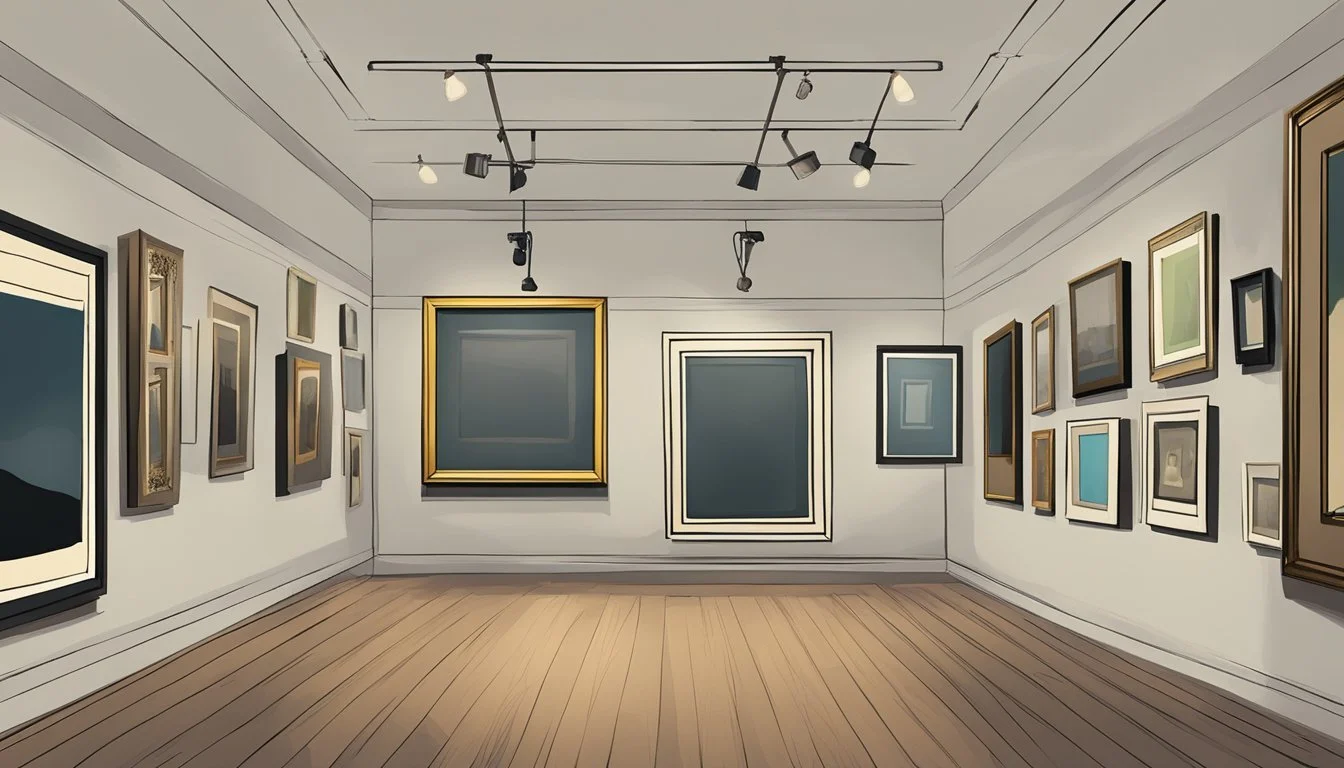7 Fascinating Documentaries on Famous Art Heists and Recoveries
Unraveling High-Stakes Museum Mysteries
Art heists have captivated the public imagination for generations, combining the allure of priceless masterpieces with the intrigue of high-stakes crime. Documentaries exploring these audacious thefts offer viewers a glimpse into the shadowy world of art crime, unveiling the methods used by thieves and the relentless efforts of investigators to recover stolen treasures.
These films not only entertain but also shed light on the complexities of art security, the black market for stolen artworks, and the cultural impact of losing irreplaceable pieces of history. From daring museum break-ins to sophisticated forgery operations, each documentary presents a unique story that challenges our understanding of art's value beyond its monetary worth. The seven documentaries featured in this article provide an in-depth look at some of the most notorious art heists and the fascinating attempts to bring these masterpieces back to their rightful homes.
1) 'The Great Art Robbery' (2013)
'The Great Art Robbery' is a captivating documentary that delves into one of the most daring art heists in history. Released in 2013, the film provides viewers with an in-depth look at the meticulous planning and execution of a bold theft.
The documentary explores the intricacies of the crime, highlighting the cunning and intelligence of those involved. It offers a unique perspective on the world of high-stakes art theft and the methods employed by skilled criminals.
Viewers are taken on a thrilling journey through the events surrounding the robbery, with expert commentary and analysis providing context. The film showcases the challenges faced by law enforcement in solving such complex cases.
'The Great Art Robbery' not only entertains but also educates audiences about the vulnerabilities in art security systems. It sheds light on the motivations behind art theft and the impact these crimes have on the art world.
Through interviews and reenactments, the documentary paints a vivid picture of the heist, keeping viewers engaged from start to finish. It serves as a fascinating exploration of a criminal underworld rarely seen by the public.
2) 'This Is a Robbery: The World's Biggest Art Heist' (2021)
'This Is a Robbery: The World's Biggest Art Heist' is a four-part Netflix documentary series that explores the infamous 1990 theft at the Isabella Stewart Gardner Museum in Boston. The series, directed by Colin Barnicle, delves into the details of what is considered the largest art heist in history.
On March 18, 1990, two men disguised as police officers entered the museum and stole 13 valuable artworks. The stolen pieces included works by Rembrandt, Vermeer, and other renowned artists, with an estimated value of over half a billion dollars in today's market.
The documentary series was produced over seven years, beginning in 2014. It features interviews with key figures involved in the case, including investigators, museum staff, and art experts.
'This Is a Robbery' examines various theories about the perpetrators and the potential whereabouts of the stolen artworks. The series provides a comprehensive look at the ongoing investigation and the impact of the theft on the art world.
Despite extensive efforts, the case remains unsolved, and the artworks have not been recovered. The documentary offers viewers an in-depth exploration of this fascinating and enduring mystery in the world of art crime.
3) 'The $50 Million Art Swindle' (2020)
'The $50 Million Art Swindle' is a compelling documentary that explores the audacious crimes of Michel Cohen, a New York art dealer. The film chronicles Cohen's journey from a high school dropout to a prominent figure in the art world.
Cohen's charm and business acumen helped him climb the ranks of the art industry. He built a successful career dealing with works by renowned artists such as Picasso and Chagall.
However, Cohen's world came crashing down when he engaged in reckless trading. To cover his losses, he orchestrated a massive fraud scheme, swindling over $50 million from private collectors, auction houses, and fellow art dealers.
When his deceptions were uncovered, Cohen fled the United States. The documentary delves into the details of his elaborate scam and subsequent escape.
Directed by Vanessa Engle, this feature-length film offers a fascinating look at one of the art world's most notorious scandals. It sheds light on the vulnerabilities of the high-end art market and the consequences of unchecked greed.
4) 'The Great Art Caper' (1995)
'The Great Art Caper' is a documentary that explores one of the most audacious art heists in history. The film focuses on the 1990 theft at the Isabella Stewart Gardner Museum in Boston.
Two men disguised as police officers managed to gain entry to the museum in the early hours of March 18, 1990. They proceeded to tie up the security guards and spent 81 minutes inside the building.
The thieves made off with 13 valuable artworks, including pieces by Rembrandt, Vermeer, and Degas. The total value of the stolen art is estimated at $500 million.
Despite extensive investigations, the case remains unsolved to this day. The documentary examines the details of the heist and the ongoing efforts to recover the missing masterpieces.
'The Great Art Caper' provides insight into the world of art theft and the challenges faced by law enforcement in solving these complex crimes. It highlights the impact of such thefts on the art world and cultural heritage.
The film features interviews with investigators, art experts, and museum staff, offering various perspectives on the case. It also explores theories about the possible motivations behind the heist and the potential whereabouts of the stolen artworks.
5) 'Stealing Klimt' (2007)
'Stealing Klimt' is a documentary that chronicles Maria Altmann's quest to reclaim five Gustav Klimt paintings stolen from her family by the Nazis in 1938. The film provides insight into Altmann's early life in Vienna and her dramatic escape from Nazi-occupied Austria.
The documentary follows the 90-year-old Altmann as she challenges the Austrian government's claim to the artworks. It details the legal battle that ensued, which lasted for years and eventually reached the United States Supreme Court.
Among the disputed paintings was the famous "Portrait of Adele Bloch-Bauer I," also known as "The Lady in Gold." This iconic work depicts Altmann's aunt and had been displayed in the Austrian National Gallery for decades.
'Stealing Klimt' explores the complex issues of art restitution and the lasting impact of Nazi looting during World War II. The film showcases the determination of one woman to reclaim her family's heritage and seek justice for past wrongs.
The documentary served as inspiration for the 2015 feature film "Woman in Gold," starring Helen Mirren as Maria Altmann. 'Stealing Klimt' offers viewers a factual account of the events that led to one of the most significant art restitution cases in recent history.
6) 'The Great Art Steal' (2005)
'The Great Art Steal' is a compelling documentary that examines one of the most audacious art heists in history. The film focuses on the 1990 theft at the Isabella Stewart Gardner Museum in Boston, where thieves made off with 13 priceless artworks valued at over $500 million.
The documentary provides a detailed account of the heist, exploring how the thieves managed to bypass security and escape with masterpieces by Rembrandt, Vermeer, and Degas. It features interviews with investigators, art experts, and museum staff who were involved in the case.
'The Great Art Steal' also delves into the ongoing investigation and recovery efforts. The film examines various theories about the theft and potential suspects, shedding light on the complex world of art crime.
The documentary highlights the impact of the theft on the art world and the Gardner Museum itself. It explores the empty frames that still hang in the museum, serving as a poignant reminder of the missing artworks.
Through its engaging narrative and expert insights, 'The Great Art Steal' offers viewers a fascinating look into one of the most notorious unsolved art crimes of the 20th century.
7) 'Art Heist' (2003)
'Art Heist' is a documentary that explores one of the most daring art thefts in modern history. The film focuses on the 1990 robbery at the Isabella Stewart Gardner Museum in Boston, where thieves made off with 13 priceless artworks valued at over $500 million.
Directed by Rebecca Dreyfus, the documentary combines interviews, reenactments, and archival footage to piece together the events of that fateful night. It showcases the ongoing investigation and the efforts to recover the stolen masterpieces, including works by Rembrandt, Vermeer, and Degas.
The film delves into the world of art crime, exploring potential suspects and theories about the heist. It features interviews with investigators, art experts, and even former art thieves, providing diverse perspectives on the case.
'Art Heist' not only recounts the details of the robbery but also examines its lasting impact on the art world and museum security. The documentary highlights the enduring mystery surrounding the stolen artworks, which remain unrecovered to this day.
Historical Context of Art Heists
Art theft has been a persistent issue throughout history, with notable cases dating back centuries. The motivations and methods of thieves have evolved, significantly impacting both the art world and law enforcement practices.
Early Notable Thefts
The theft of valuable artworks can be traced back to ancient times. In 1473, Hans Memling's "The Last Judgment" was stolen by pirates while being transported from Bruges to Florence. This incident is often considered one of the earliest documented art heists. During the Napoleonic era, widespread looting of art occurred as French forces seized masterpieces from conquered territories.
The 19th century saw a rise in high-profile thefts. In 1911, Leonardo da Vinci's "Mona Lisa" was stolen from the Louvre, shocking the world. The painting was recovered two years later, but the incident highlighted the vulnerability of even the most famous artworks.
Impact on the Art World
Art heists have profoundly influenced museum security practices. After major thefts, institutions implemented more sophisticated alarm systems, increased surveillance, and improved staff training. Insurance policies for valuable artworks became more comprehensive and expensive.
The black market for stolen art expanded, creating a complex network of thieves, forgers, and unscrupulous collectors. This underground economy has led to the development of specialized art crime units within law enforcement agencies.
Public awareness of art theft has grown, partly due to media coverage and popular culture depictions. This increased attention has sometimes aided in the recovery of stolen pieces, as the public became more vigilant in identifying and reporting suspicious artworks.
Recovery Processes and Challenges
Recovering stolen art requires coordinated efforts from law enforcement, art experts, and international organizations. Authentication techniques play a crucial role in verifying recovered works and exposing forgeries.
Role of Interpol and Art Crime Teams
Interpol's Works of Art unit maintains a database of stolen artworks and cultural property. This database helps customs officials and art dealers identify looted pieces. National art crime teams, like the FBI's Art Crime Team, specialize in investigating art thefts and forgeries.
These teams work across borders to track stolen art. They collaborate with auction houses, museums, and private collectors to gather intelligence. Undercover operations are sometimes used to infiltrate criminal networks involved in art trafficking.
Methods of Art Authentication
Scientific techniques are essential for verifying the authenticity of recovered artworks. X-ray fluorescence can reveal the chemical composition of pigments. Infrared reflectography uncovers hidden sketches or alterations beneath paint layers.
Experts analyze brushstrokes, canvas weave, and frame construction to assess authenticity. Provenance research traces an artwork's ownership history. Digital imaging and AI assist in comparing works to known originals.
Forensic techniques like DNA analysis of canvas fibers or radiocarbon dating of materials provide additional evidence. Authentication often requires a multidisciplinary approach, combining scientific analysis with expert connoisseurship.






